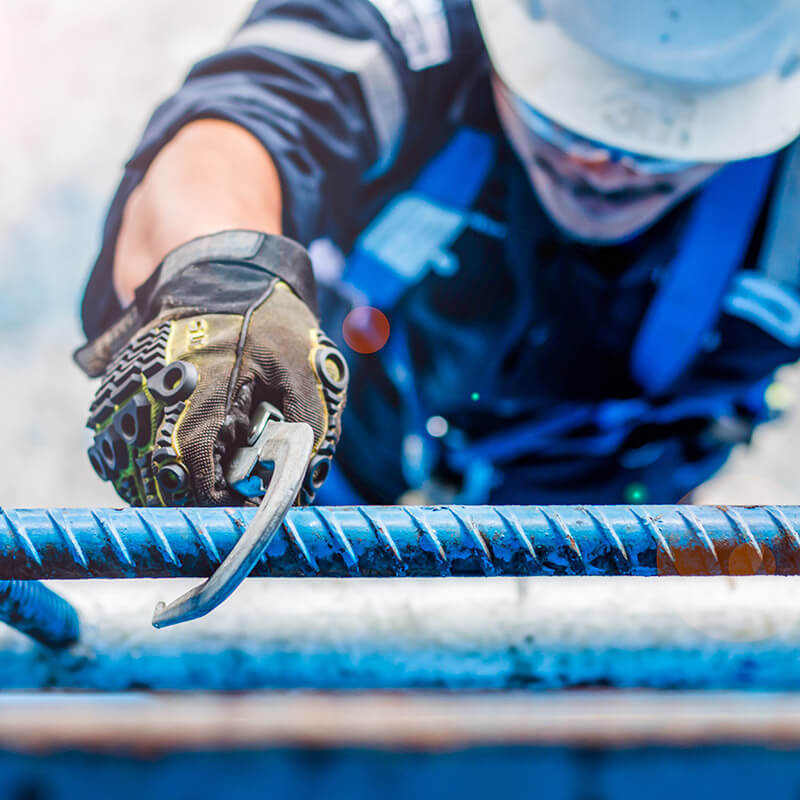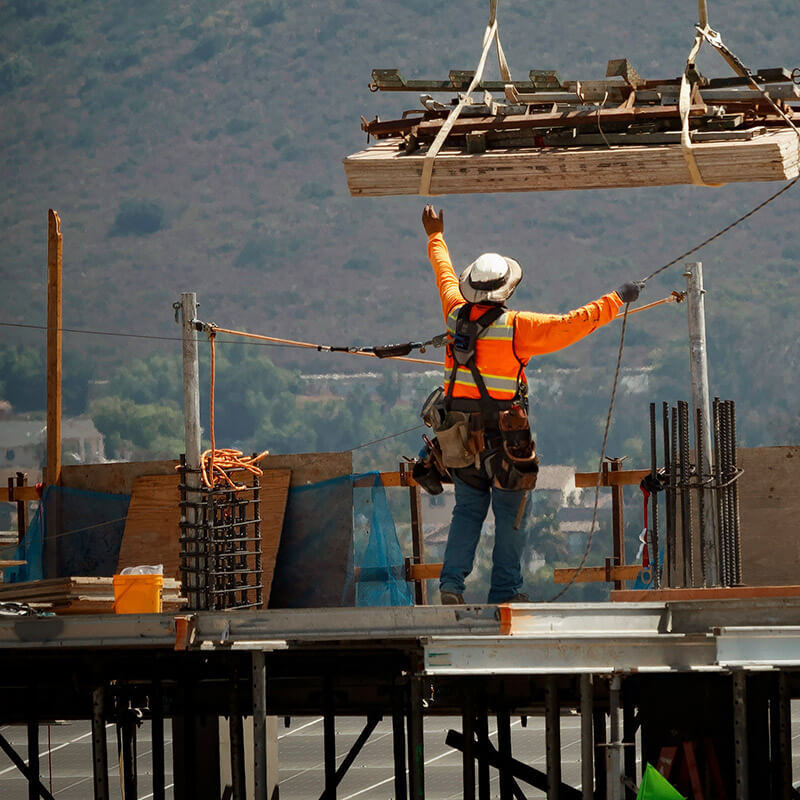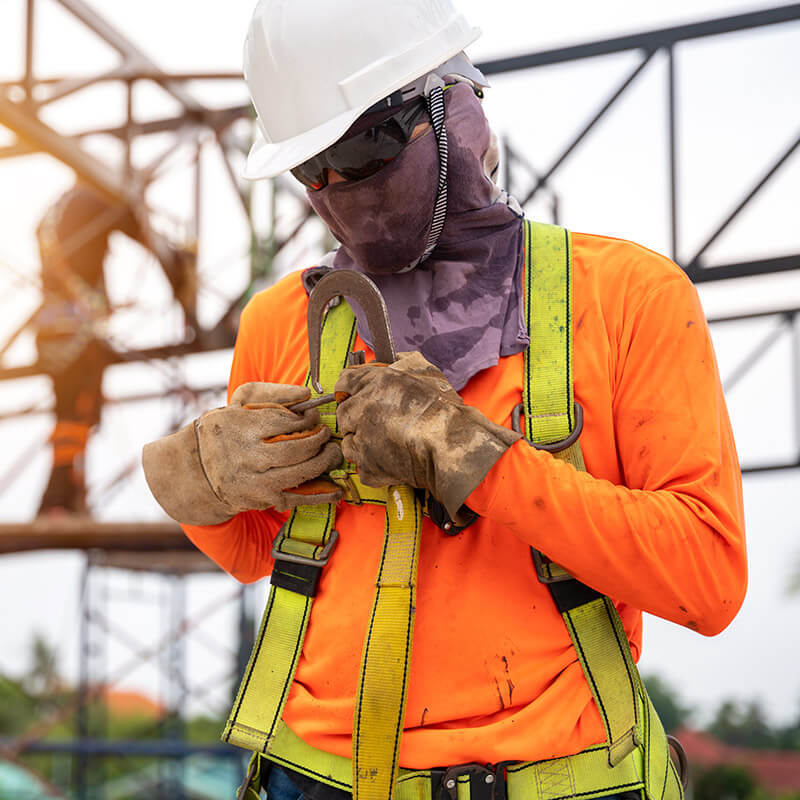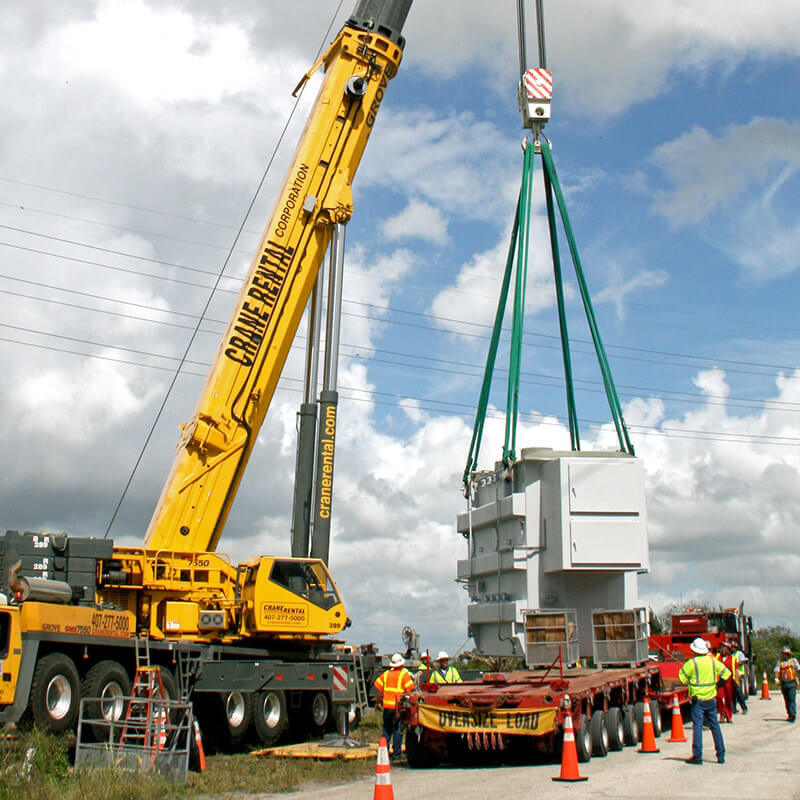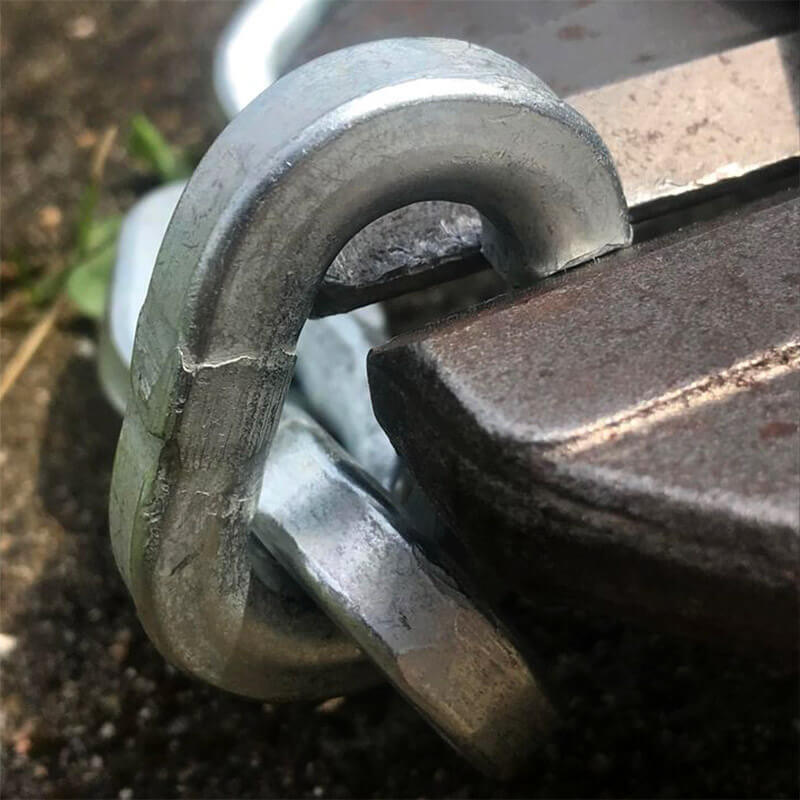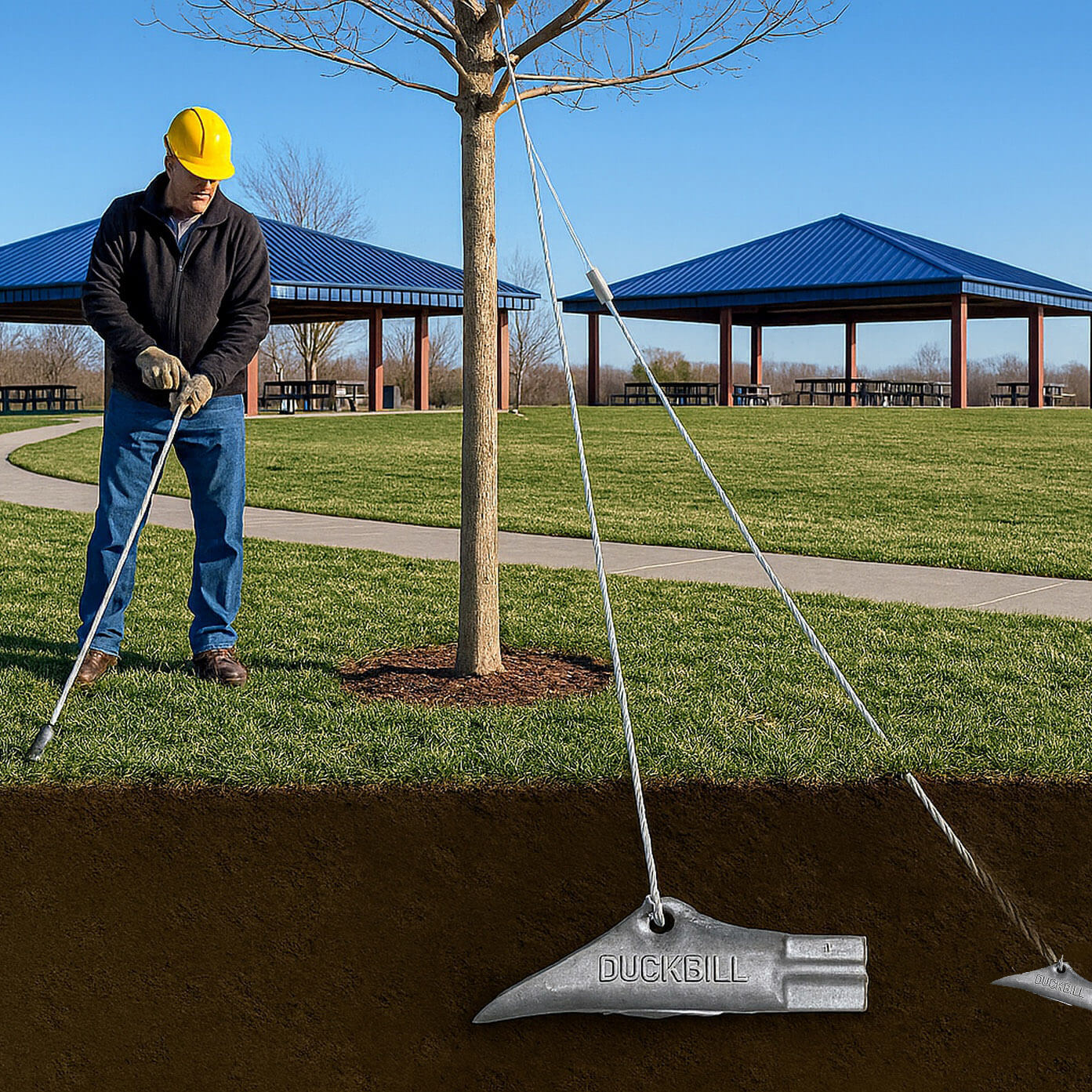What are 3 Types of Fall Protection Devices?
Fall protection devices are crucial for ensuring workplace safety and preventing accidents. In industries where workers are exposed to heights or elevated areas, the use of appropriate fall protection equipment is paramount. There are three main types of fall protection devices that provide effective safety measures for workers: fall arrest systems, fall restraint systems, and fall prevention measures.
Fall arrest systems are designed to stop a fall in progress and protect the worker from injuries. They typically include safety harnesses, self-retracting lifelines, and shock-absorbing lanyards. These devices are crucial in scenarios where workers may experience a fall, such as construction sites or industrial settings.
Fall restraint systems, on the other hand, focus on preventing workers from reaching fall hazards. They generally involve the use of tie-off systems, anchor points, and lanyards that limit the worker's movement and keep them in a safe position. Fall restraint systems are suitable for situations where workers need to work near an unprotected edge or fall hazard.
In addition to fall arrest and restraint systems, fall prevention measures also play a significant role in ensuring workplace safety. Fall prevention measures involve the use of physical barriers such as guardrails, toe boards, and skylight screens to eliminate or reduce fall hazards. These measures are primarily proactive and aim to prevent falls before they occur.
Understanding the different types of fall protection devices can help businesses prioritize safety, implement appropriate measures, and provide workers with the necessary equipment to perform their tasks in a safe environment.
Key Takeaways:
- Fall protection devices are essential for workplace safety and accident prevention.
- The three main types of fall protection devices are fall arrest systems, fall restraint systems, and fall prevention measures.
- Fall arrest systems stop a fall in progress and protect workers through safety harnesses, self-retracting lifelines, and shock-absorbing lanyards.
- Fall restraint systems prevent workers from reaching fall hazards using tie-off systems, anchor points, and lanyards.
- Fall prevention measures focus on eliminating or reducing fall hazards through physical barriers like guardrails, toe boards, and skylight screens.
Understanding the Essentials of Fall Protection
Fall protection is a critical aspect of workplace safety. Understanding the essentials of fall protection is crucial for employers and employees alike. It involves identifying fall hazards, implementing appropriate safety measures, providing necessary training, and using the right fall protection devices.
By prioritizing fall protection, businesses can create a safe working environment and reduce the risk of accidents.
Implementing fall protection measures is essential to ensure workplace safety. Identifying potential fall hazards in the work environment is the first step in providing adequate protection. This includes evaluating elevated work areas, slippery surfaces, or unstable platforms that pose a risk of falls.
Once potential hazards are identified, appropriate safety measures should be implemented. This may include installing guardrails, safety nets, or other physical barriers to prevent falls. Employers should also provide workers with personal protective equipment (PPE), such as safety harnesses, lanyards, and helmets, to protect against fall-related injuries.
Training plays a vital role in fall prevention. Employers should provide comprehensive training programs on fall protection, including how to use safety equipment effectively, identify hazards, and follow proper procedures to mitigate risks. Ongoing training and refresher courses should be provided to ensure that workers stay up to date with safety protocols.
Choosing the right fall protection devices is crucial for ensuring workplace safety. Fall arrest systems, fall restraint systems, and fall prevention measures all serve different purposes and should be selected based on the specific needs and requirements of the work environment. Consulting with safety experts and adhering to industry regulations can help businesses make well-informed decisions regarding fall protection devices.
By understanding the essentials of fall protection, prioritizing workplace safety, and implementing appropriate safety measures, businesses can create a safe working environment and reduce the risk of accidents and injuries.
Types of Fall Arrest Systems
Fall arrest systems are essential in ensuring worker safety and preventing injuries caused by falls. These systems are specifically designed to stop a fall in progress and protect the worker. Fall arrest systems typically consist of safety harnesses, self-retracting lifelines, and shock-absorbing lanyards. Each component plays a crucial role in providing effective fall protection.
Safety Harnesses and Their Uses
Safety harnesses are a key component of fall arrest systems. They are worn by workers and provide a secure attachment point for connecting to lifelines or anchor points. Safety harnesses distribute the forces of a fall across the body, reducing the risk of injury. They are adjustable and equipped with buckles and straps for a customized fit, ensuring comfort and safety for the wearer.
Self-Retracting Lifelines and Anchor Points
Self-retracting lifelines (SRLs) are another important element of fall arrest systems. SRLs automatically retract and extend based on the worker's movements, providing continuous fall protection. These devices are commonly used in industries where workers move around elevated areas, such as construction, maintenance, and manufacturing. Anchor points, to which SRLs are connected, are strategically placed around the worksite to provide secure attachment and support.
Importance of Shock-Absorbing Lanyards
Shock-absorbing lanyards are designed to reduce the impact forces experienced during a fall. They are constructed with specialized materials that absorb the energy generated during a fall, minimizing the risk of injury to the worker. Shock-absorbing lanyards are an essential component of fall arrest systems, providing an added layer of protection and preventing excessive strain on the body. These lanyards are available in various lengths and configurations to suit different working environments and needs.
By utilizing safety harnesses, self-retracting lifelines, and shock-absorbing lanyards, fall arrest systems provide effective fall protection, ensuring the safety and well-being of workers at height.
Exploring Fall Restraint Systems
Fall restraint systems are an integral part of workplace safety, designed to prevent workers from reaching fall hazards. Unlike fall arrest systems that intervene once a fall has occurred, fall restraint systems focus on keeping workers in a safe position to avoid potential accidents. These systems utilize tie-off systems, anchor points, and lanyards to limit the movement of workers and keep them away from unprotected edges or fall hazards.
By implementing fall restraint systems, businesses can effectively reduce the risk of falls and ensure the safety of their employees. These systems act as a proactive measure, providing a physical barrier that prevents workers from approaching hazardous areas. By restricting movement, fall restraint systems significantly minimize the potential for accidents and injuries in elevated work environments.
Implementing Active vs. Passive Fall Protection
Fall protection is a critical aspect of workplace safety, and implementing the right fall protection measures is essential for preventing accidents. Two main approaches to fall protection are active fall protection and passive fall protection. Understanding the differences between these approaches and ensuring compliance with OSHA regulations is crucial for maintaining a safe working environment.
Defining Active Fall Protection Gear
Active fall protection gear involves the active participation of the worker. This typically includes the use of personal protective equipment (PPE) such as safety harnesses and lanyards. These systems rely on the worker's awareness and correct usage to prevent falls.
Safety harnesses are a vital component of active fall protection gear. Workers wear safety harnesses to provide a secure attachment point for connecting to lifelines or anchor points. These harnesses distribute the forces of a fall across the body, reducing the risk of injury.
The correct usage of active fall protection gear, such as safety harnesses and lanyards, is crucial. Proper training and regular inspections of the equipment are necessary to ensure their effectiveness and compliance with OSHA regulations.
Understanding Passive Fall Protection Solutions
Passive fall protection solutions provide continuous protection without requiring any action from the worker. These solutions create physical barriers to prevent falls and minimize the risk of injuries.
Examples of passive fall protection solutions include guardrails, safety nets, and skylight screens. Guardrails are a common form of passive fall protection and serve as a physical barrier along exposed edges or platforms. They act as the first line of defense against falls.
Safety nets are another passive fall protection measure. They are installed below elevated work areas to catch workers in the event of a fall. Safety nets provide an additional layer of protection and can significantly reduce the risk of serious injury or death.
Skylight screens are designed to prevent falls through skylights by covering them with protective screens or guards. These screens create a physical barrier while still allowing natural light into the building, ensuring both safety and visibility.
OSHA Compliance for Fall Protection Equipment
When implementing fall protection measures, it is essential to comply with the regulations set by the Occupational Safety and Health Administration (OSHA). OSHA sets guidelines and regulations for fall protection equipment to ensure workplace safety.
Fall protection regulations include requirements for the design, inspection, and use of fall protection equipment. Employers must provide adequate training to workers regarding the proper use of fall protection gear and ensure its regular inspection and maintenance. Compliance with OSHA regulations is critical to avoid penalties and maintain a safe working environment for all employees.

What Are 3 Types of Fall Protection Devices?
Fall protection devices play a vital role in ensuring workplace safety and protecting workers from falls and injuries. Understanding the different types of fall protection devices is crucial for selecting the right equipment to maintain a safe working environment.
The three main types of fall protection devices are:
- Fall Arrest Systems
- Fall Restraint Systems
- Fall Prevention Measures
Let's explore each type in detail:
Fall Arrest Systems
Fall arrest systems are designed to stop a fall in progress and protect the worker from injuries. They consist of various components, including:
- Safety harnesses: These are worn by workers and provide a secure attachment point for connecting to lifelines or anchor points. Safety harnesses distribute the forces of a fall across the body, reducing the risk of injury.
- Self-retracting lifelines: These devices automatically retract and extend based on the worker's movements. Self-retracting lifelines provide continuous fall protection and are commonly used in industries where workers move around elevated areas.
- Shock-absorbing lanyards: These lanyards are designed to reduce the impact forces experienced during a fall. They absorb the energy generated during the fall, minimizing the risk of injury to the worker.
Fall Restraint Systems
Fall restraint systems are used to prevent workers from reaching a fall hazard. Rather than stopping a fall in progress, these systems focus on keeping workers in a safe position. Some components of fall restraint systems include:
- Tie-off systems: These systems limit the worker's movement and prevent them from getting close to an unprotected edge or fall hazard.
- Anchor points: Anchor points are fixed structures where workers can connect their safety harnesses or lanyards to ensure they remain in a safe position.
- Lanyards: Lanyards are used in fall restraint systems to restrict the movement of workers and prevent them from reaching a fall hazard.
Fall Prevention Measures
Fall prevention measures aim to eliminate or reduce fall hazards in the workplace. These measures focus on proactive steps and the use of safety equipment to prevent falls. Some common fall prevention measures include:
- Guardrails: Guardrails provide a physical barrier along exposed edges or platforms, acting as the first line of defense against falls.
- Skylight screens: These protective screens or guards cover skylights to prevent falls through them while still allowing natural light into the building.
- Toe boards: Toe boards are installed along the edges of elevated platforms or walkways to prevent tools, equipment, or debris from falling off and posing a risk to workers below.
By understanding the different types of fall protection devices and implementing the appropriate equipment and safety measures, businesses can ensure the safety and well-being of their employees.
Please note that the HTML tags/classes used in the text (e.g.,) are for instructional purposes only and may not represent actual HTML tags/classes used in the final document.
The Role of Fall Prevention Measures
Fall prevention measures are proactive steps taken to eliminate or reduce fall hazards in the workplace. These measures include the use of physical barriers and safety equipment to prevent falls before they occur. By implementing these measures, businesses can create a safer working environment and protect their employees from potential injuries.
Guardrails: The First Line of Defense Against Falls
Guardrails are one of the most common fall prevention measures used in various industries. They provide a physical barrier along exposed edges or platforms, acting as the first line of defense against falls. Guardrails must meet specific safety standards to ensure they are structurally sound and capable of withstanding the impact of a fall. By installing guardrails in elevated areas, businesses can significantly reduce the risk of falls and create a safer work environment.
Skylight Screens and Their Functionality
Skylight screens are designed to prevent falls through skylights by covering them with protective screens or guards. These screens provide a secure barrier while still allowing natural light to enter the building. Skylight screens are an essential fall prevention measure, especially in buildings where workers may encounter skylights on rooftops or elevated areas. By installing skylight screens, businesses can safeguard their employees and prevent falls from occurring through these potential hazards.
Ensuring Adequate Safety Through Toe Boards
Toe boards are another crucial fall prevention measure often used in construction or other industries with elevated platforms or walkways. These boards are installed along the edges of such structures to prevent tools, equipment, or debris from falling off and posing a risk to workers below. By ensuring the installation of sturdy and appropriate toe boards, businesses can minimize the risk of falling objects and ensure the safety of workers in elevated areas.
Conclusion
Fall protection devices are crucial for maintaining workplace safety and reducing the risk of falls and injuries. By understanding the different types of fall protection devices, implementing appropriate safety measures, and ensuring compliance with OSHA regulations, businesses can create a secure working environment for their employees.
Investing in fall protection devices such as fall arrest systems, fall restraint systems, and fall prevention measures is essential to protect employees from potential hazards. These devices work in tandem to provide effective protection against falls and mitigate the impact of accidents.
Furthermore, prioritizing workplace safety and adhering to OSHA compliance guidelines are vital for businesses. By ensuring proper training and usage of fall protection devices, organizations can demonstrate their commitment to employee well-being and maintain a safe working environment.
In conclusion, the use of appropriate fall protection devices, the implementation of safety measures, and compliance with OSHA regulations are fundamental steps in safeguarding workers and preventing accidents. By taking these measures seriously, businesses can effectively mitigate the risk of falls, prioritize employee safety, and foster a productive and secure work environment. For the best in Fall Protection equipment and brands like Palmer our team at Bishop Lifting has you covered in whatever you need and can have it shipped to your door.
FAQ
What are 3 types of fall protection devices?
The three main types of fall protection devices are fall arrest systems, fall restraint systems, and fall prevention measures.
What is the purpose of fall arrest systems?
Fall arrest systems are designed to stop a fall in progress and protect the worker from injuries. They typically involve the use of safety harnesses, self-retracting lifelines, and shock-absorbing lanyards.
What are safety harnesses used for?
Safety harnesses are worn by workers and provide a secure attachment point for connecting to lifelines or anchor points. They distribute the forces of a fall across the body, reducing the risk of injury.
What are self-retracting lifelines and anchor points used for?
Self-retracting lifelines are devices that automatically retract and extend based on the worker's movements. They provide continuous fall protection and are commonly used in industries where workers move around elevated areas. Anchor points are designated locations where lifelines or lanyards are attached to provide secure connections for fall protection systems.
How do shock-absorbing lanyards reduce the risk of injury?
Shock-absorbing lanyards are designed to reduce the impact forces experienced during a fall. They absorb the energy generated during the fall, minimizing the risk of injury to the worker.
What is the purpose of fall restraint systems?
Fall restraint systems are used to prevent workers from reaching a fall hazard. Unlike fall arrest systems that stop a fall in progress, fall restraint systems focus on keeping workers in a safe position by using tie-off systems, anchor points, and lanyards.
What is the difference between active and passive fall protection?
Active fall protection gear requires active participation from the worker and typically involves the use of personal protective equipment (PPE) such as safety harnesses and lanyards. Passive fall protection solutions provide continuous protection without requiring any action from the worker and include guardrails, safety nets, and skylight screens.
Why is OSHA compliance important for fall protection equipment?
OSHA sets guidelines and regulations for fall protection equipment to ensure workplace safety. Compliance with these regulations is critical to avoid penalties and maintain a safe working environment.
What are some examples of fall prevention measures?
Fall prevention measures include the use of guardrails, skylight screens, and toe boards. Guardrails provide a physical barrier along exposed edges or platforms, skylight screens cover skylights to prevent falls, and toe boards prevent tools and debris from falling off elevated platforms.
What Is a Kernmantle Rope Used For?
Nov 21st 2025
What Is a Fall Protection Harness?
Nov 14th 2025
What are the four components of a PFAS?
Nov 7th 2025
Is Palmer Safety OSHA Compliant?
Nov 3rd 2025
What’s the Hardest Chain to Cut?
Oct 20th 2025
What are the most common tools used in rigging?
Oct 13th 2025
What Is the Strongest Security Chain?
Oct 7th 2025
Are Pewag Chains Good?
Oct 3rd 2025
What Are DuckBill Anchors Used For?
Sep 26th 2025



